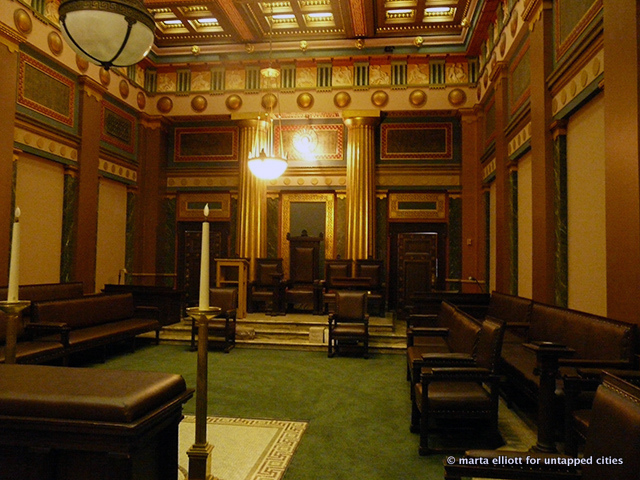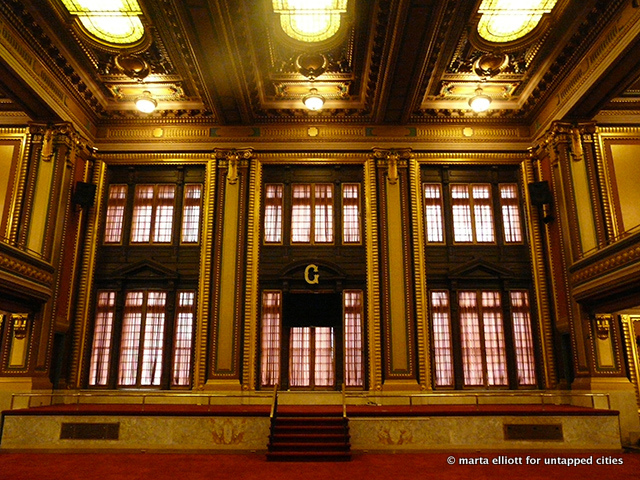 The Grand Lodge Room
The Grand Lodge Room
We’ve always been curious about the Freemasons, and even more so about the Grand Lodge of New York situated on a bustling 23rd street in Chelsea. So that we could learn about the ancient and mysterious fraternal order without joining, we toured their Masonic Hall, home to the Grand Lodge of New York (more formally the Grand Lodge of Free and Accepted Masons). Often thought of as a secret society, they actually boast a large flag in the middle of Manhattan and insist “Our big secret is that we have no secrets.” Nevertheless, no one is really sure of what goes on in this grand Masonic Hall unless they’re “in.” Find out more secrets of the Grand Lodge here!
During our visit, we were reminded that they are not a cult, that they don’t profile or exclude anyone from joining, and that they use tons of symbols not to be secretive, but to communicate quickly and to inspire and educate their members. There are a lot of common misconceptions surrounding the Freemasons, which we’d like to help clear up.
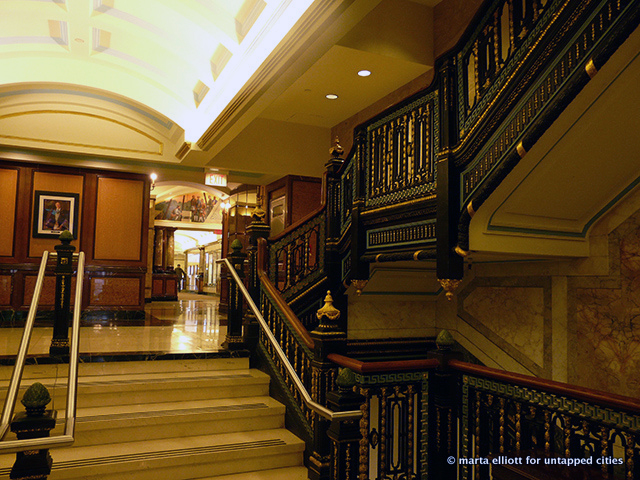 Entrance to the Masonic Hall
Entrance to the Masonic Hall
Quick facts:
– Despite the belief that they are a religious or poetically active group, Masons are actually not allowed to speak about religion or politics during “communication” or the meeting of a lodge.
– The only “religious” requirement to join is that a man hold a belief in a supreme deity (which doesn’t even need to be part of organized religion).
– Boys only. That’s right. The Masons are a fraternal order that does not accept women. In response, women created several orders– the most significant is called the Order of the Eastern Star.
– The order is rooted in King Solomon’s Temple in a story that took place in 967 BCE, but the first evidence of the Freemasons’ existence dates back to 1390 CE.
– There is a Grand Master that oversees the Masons for each Grand Lodge. These Grand Lodges include numerous smaller lodges. Fun fact: the famous English architect Christopher Wren was Grand Master in England during the 18th century.
Click here for a list of famous and influential Freemasons.
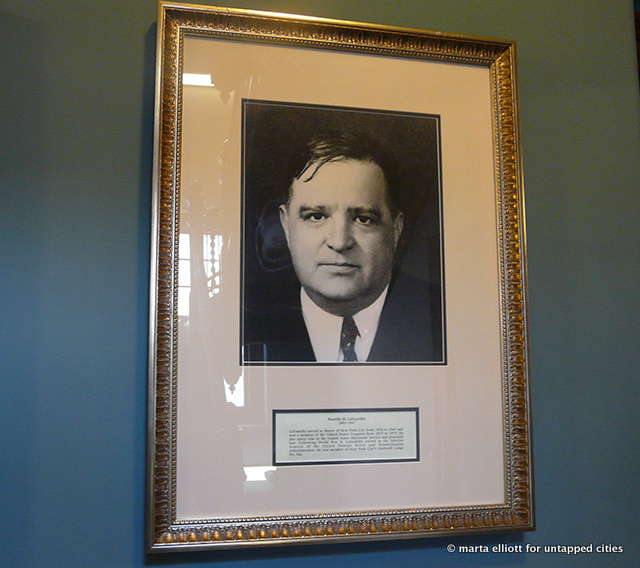 Among the famous brothers of the Grand Lodge of New York are John Jacob Astor, Harry Houdini, and NYC Mayor Fiorello Laguardia.
Among the famous brothers of the Grand Lodge of New York are John Jacob Astor, Harry Houdini, and NYC Mayor Fiorello Laguardia.
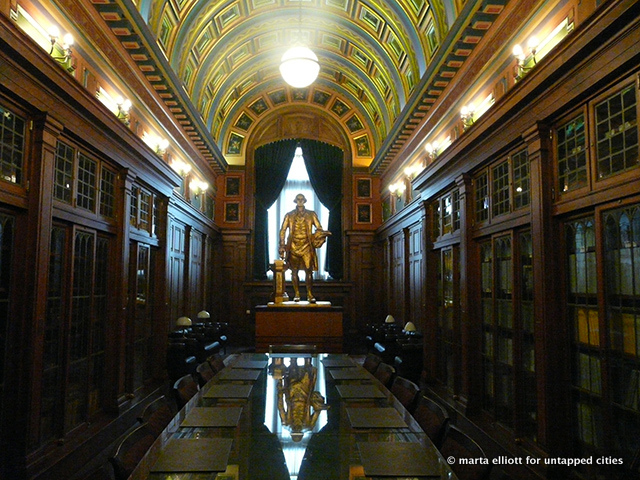 The Hollander Room with statue of George Washington
The Hollander Room with statue of George Washington
The Grand Lodge of Free and Accepted Masons of the State of New York was established in 1781/1782.
Reverend William Walter was elected the first Grand Master of the Grand Lodge of New York.
The Bible used when George Washington was the first President sworn into office is now used in the ceremony swearing in the Grand Master in New York and the President of the country in Washington DC.
The Grand Masters of the Grand Lodge of New York have always contributed to philanthropic endeavors and continue to do so today. Upon entering the building, we were handed a pamphlet entitled “Women & Heart Disease” with “Mason Medical Research Laboratory” in the subscript.
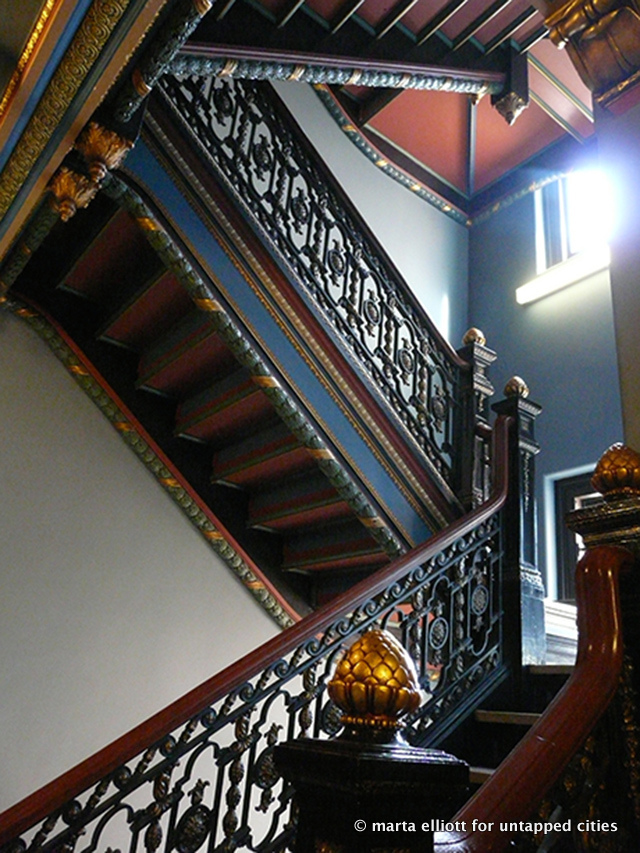 A section of the decorative stairwell that joins every hallway of lodge meeting rooms.
A section of the decorative stairwell that joins every hallway of lodge meeting rooms.
The Masonic Hall was built in 1913 by architect Harry P. Knowles, a Master Mason himself, but the current lodge meeting rooms were restored by the interior restaurateur Felix Chavez from 1986 to 1996. We were shocked to learn that each strikingly ornate room is actually all painted plaster: from imitation stone to reliefs to frescoes, we were certainly tricked by Chavez’s manipulation of plaster to resemble high quality materials.
Lodge Meeting Rooms (currently open to the public):
Renaissance Room
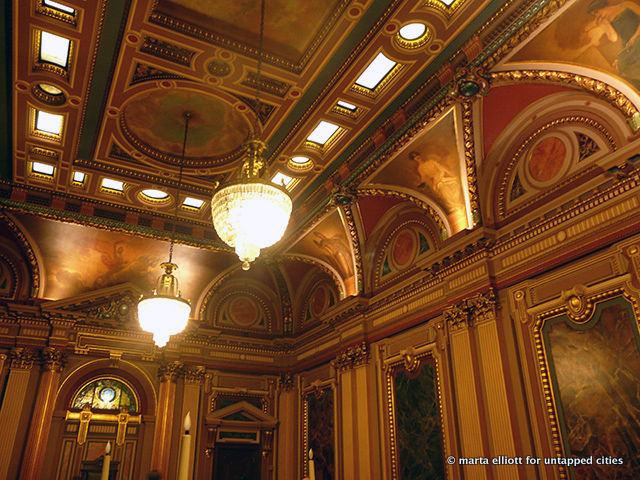 The Renaissance Room is the pride of the Masonic Hall of New York. Here, the detailed ornament in the Renaissance style is so striking that it’s easy to forget that it is all plaster and paint posing as stone and gold.
The Renaissance Room is the pride of the Masonic Hall of New York. Here, the detailed ornament in the Renaissance style is so striking that it’s easy to forget that it is all plaster and paint posing as stone and gold.
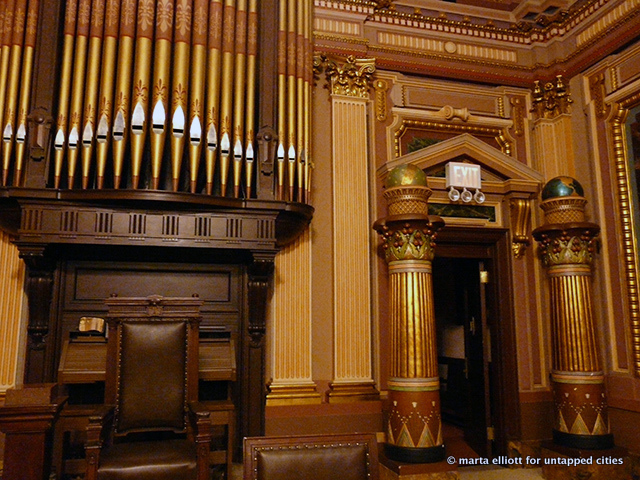 Each room has a set of columns symbolizing the Temple of Solomon and an organ that is specifically decorated to the style of the room.
Each room has a set of columns symbolizing the Temple of Solomon and an organ that is specifically decorated to the style of the room.
Ionic Room
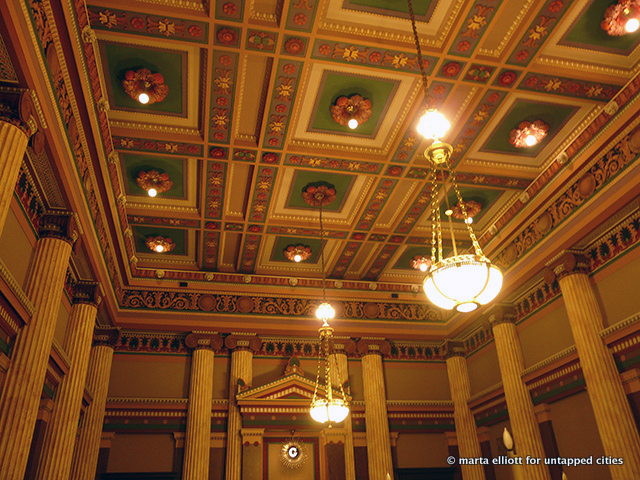 We were told that the “G” at the East end of the room stands for “Geometry” or “Great Architect of the Universe,” how they refer to the supreme deity to be inclusive.
We were told that the “G” at the East end of the room stands for “Geometry” or “Great Architect of the Universe,” how they refer to the supreme deity to be inclusive.
Corinthian Room
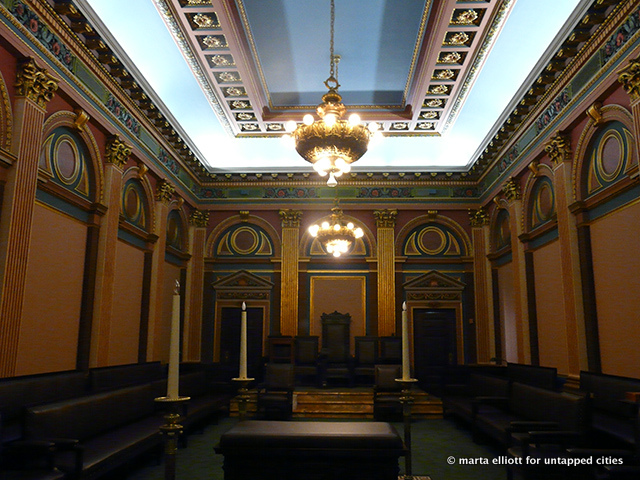 Fun Fact about the Corinthian Room is that they used up their budget and had to leave each panel a plain color forgoing the decorative plans Chavez had devised.
Fun Fact about the Corinthian Room is that they used up their budget and had to leave each panel a plain color forgoing the decorative plans Chavez had devised.
Doric Room
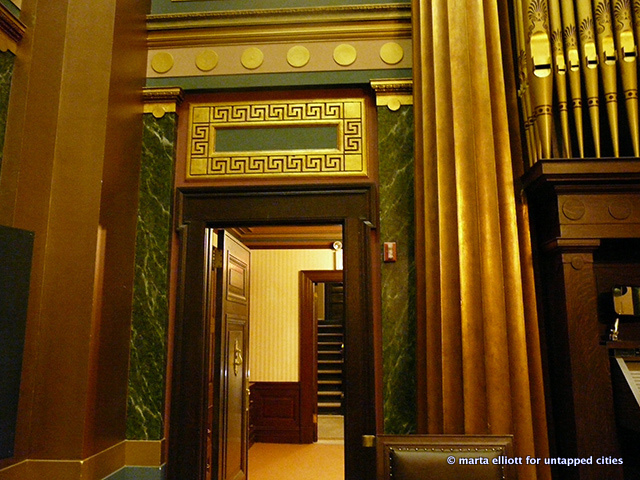 The Doric Room has imitation marble engaged columns that are strikingly realistic.
The Doric Room has imitation marble engaged columns that are strikingly realistic.
French Doric Room
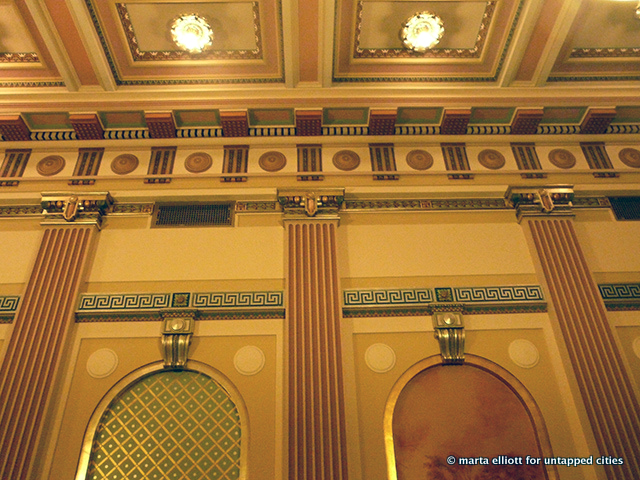 Not to be confused with the Doric Room, the French Doric Room has some additional “French” touches…
Not to be confused with the Doric Room, the French Doric Room has some additional “French” touches…
Colonial Room
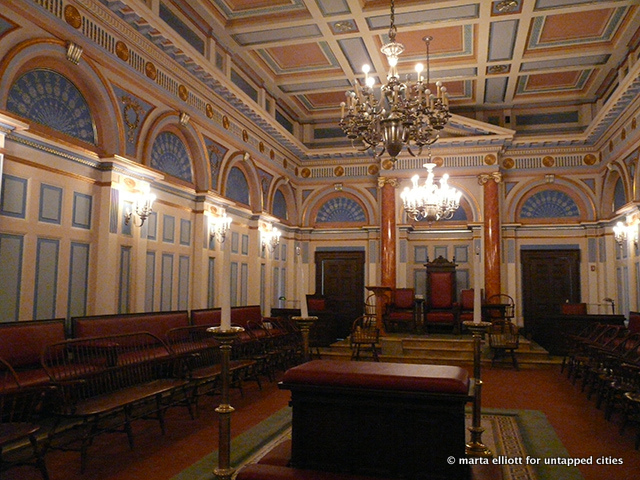 The Colonial Room has orange “marble” columns at the East end that shine like the real stuff would.
The Colonial Room has orange “marble” columns at the East end that shine like the real stuff would.
Empire Room
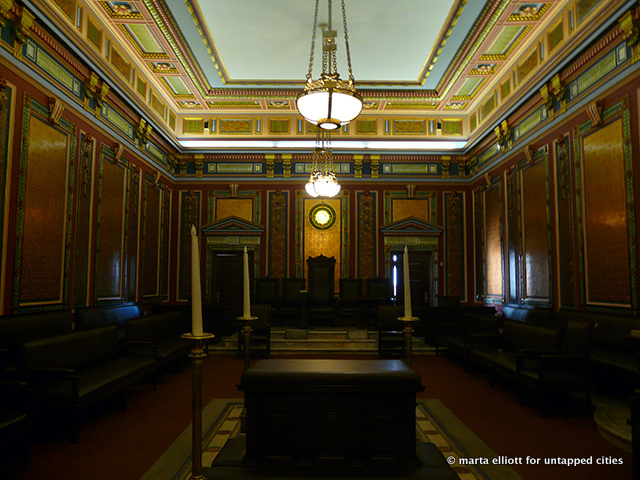 In this view of the Empire Room, notice the altar in the center of the room (as in each lodge meeting room) and the 3 candlesticks symbolizing the Worshipful Master, the Senior Warden, and the Junior Warden. If none of the 3 are present, the meeting cannot be held.
In this view of the Empire Room, notice the altar in the center of the room (as in each lodge meeting room) and the 3 candlesticks symbolizing the Worshipful Master, the Senior Warden, and the Junior Warden. If none of the 3 are present, the meeting cannot be held.
Gothic Room
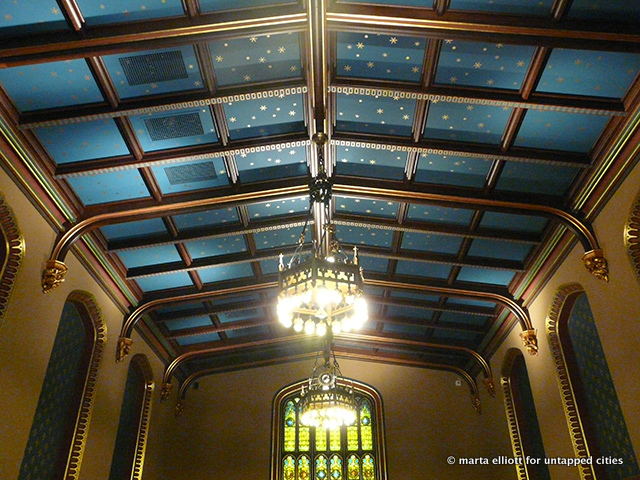 In the Gothic Room, the ceiling is painted with the stars of the night sky symbolizing the unity and equality of all men in the universe.
In the Gothic Room, the ceiling is painted with the stars of the night sky symbolizing the unity and equality of all men in the universe.
Egyptian Room
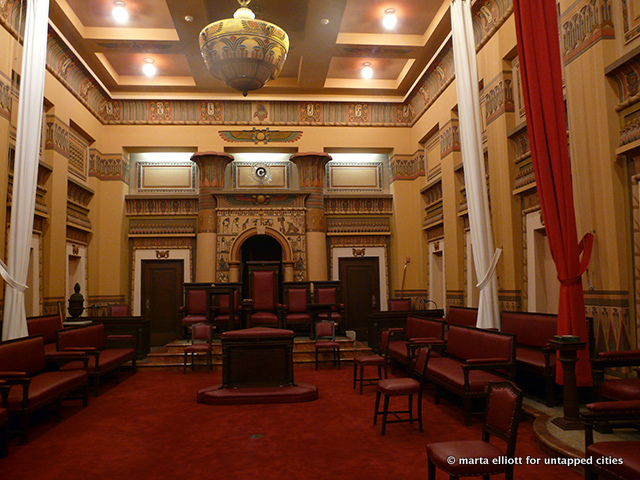 The motif of the Egyptian Room is quite obviously reminiscent of Ancient Egyptian architecture and ornament.
The motif of the Egyptian Room is quite obviously reminiscent of Ancient Egyptian architecture and ornament.
Library and Museum
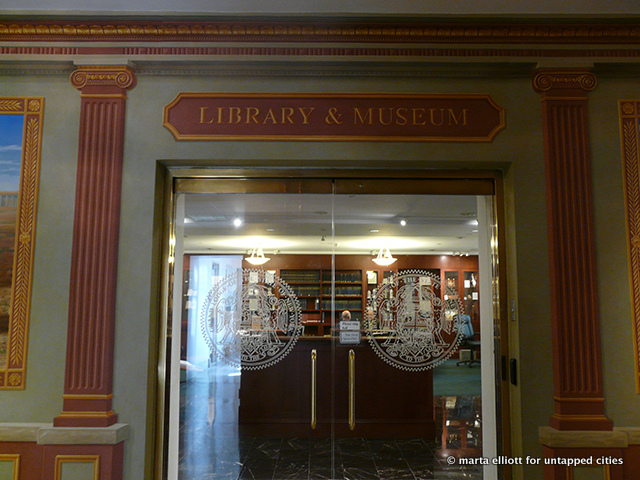 The Library of the Masonic Hall is open to the public daily, but only brothers can borrow books.
The Library of the Masonic Hall is open to the public daily, but only brothers can borrow books.
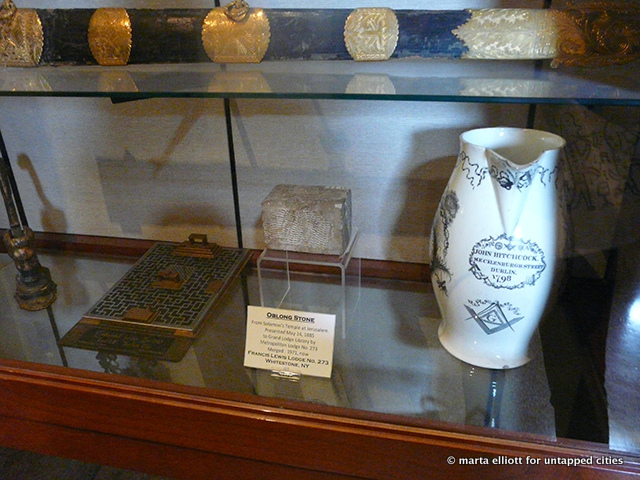 It is also home to some cool artifacts, like this stone from Solomon’s Temple in Jerusalem.
It is also home to some cool artifacts, like this stone from Solomon’s Temple in Jerusalem.
The Masonic Hall is actually two connected buildings, one on 23rd St. with commercial tenants to help fund the organization and the other on 24th St. with rooms for lodge meetings. In the 24th St. building, they are renovating the 19th floor for commercial use and are also fixing up some of the lodge meeting rooms throughout the building that we didn’t get to see.
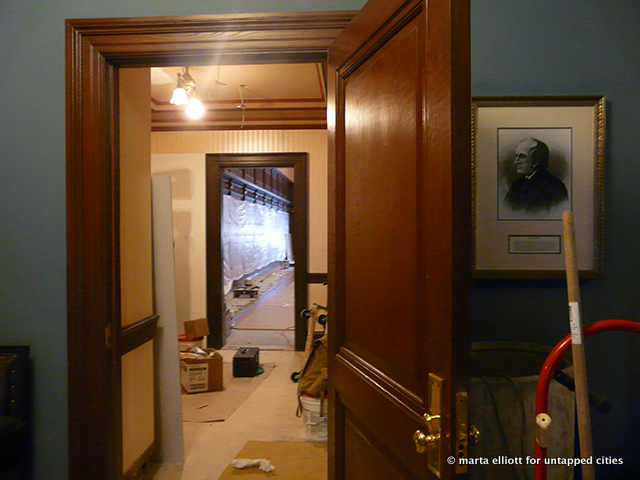
You can tour the Masonic Hall in Chelsea every weekday free of charge. The Freemasons are eager to share information about their history, traditions, and intentions with the public. Although they won’t reveal to you all their secrets, find tour information here.
For a look into another Masonic Hall’s library, check out Livingston Masonic Library: As Close As You’ll Get Without Joining and the Level Club on the Upper West Side, a massive hotel built by the masons and uncover the Top 10 Secrets of the Grand Lodge






